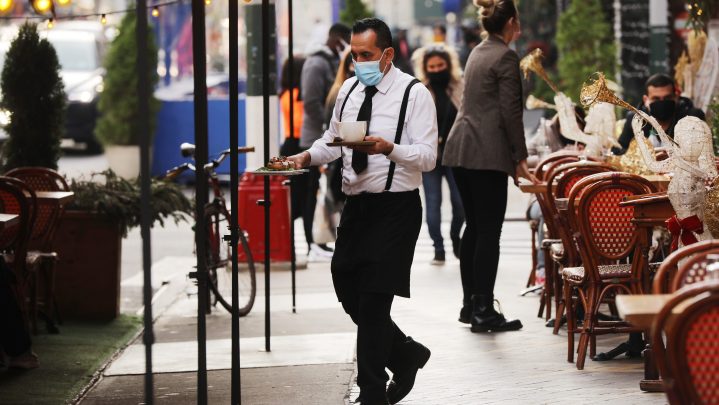
As Americans spend on experiences, inflation declines for goods and rises for services
As Americans spend on experiences, inflation declines for goods and rises for services

We’re going to dig a little bit deeper into those inflation numbers we got this morning. The core PCE price index — remember, that’s the Fed’s preferred inflation measure that excludes volatile gas and food prices — for November was up 4.7% year-over-year. That’s down from a 5.0% increase in October. So, overall, it’s heading in the right direction.
But drilling deeper into those numbers, you see a story of two inflations: Price levels for goods dropped 0.4% from October to November, while price levels for services went up by 0.4% over the same period.
When the pandemic hit, we gorged ourselves on Pelotons, sofas, air fryers. So, the prices of goods went up, and that whole supply chain mess didn’t help. Then, we got through the delta variant and omicron and decided to gorge ourselves on flights, hotels and eating out.
“It’s all services inflation now. And it’s going to be a battle between goods prices declining and service sector prices rising, and also how people choose to spend their money,” said Drew Matus, chief market strategist at MetLife Investment Management.
Our appetite for certain services may be waning, he said — like, say, traveling to see relatives. “We’re settling back into kind of where people had been pre-COVID,” Matus said. “I mean, after all, there’s only so much family you can take.”
Sorry, mee-maw. Maybe next year? While airfares may be falling, inflation in the service sector is a thorny problem to fix, per Charles Lieberman at Advisors Capital Management.
“Much of the cost of providing services is the cost of labor,” he said. “And until we see a material increase in the unemployment rate, that’s not likely to dissipate.”
Wages and salaries grew 0.5% from October to November. The Fed wants to keep the service sector out of the dreaded wage-price spiral, where prices go up, workers demand raises, companies raise prices to pay for those raises, workers demand more raises and on and on.
“Right now, we aren’t seeing a wage-price spiral within the service sector, but we do want to continue to monitor the trajectory,” said Lisa Erickson at U.S. Bank Wealth Management.
Erickson added that she expects overall inflation to come down next year — just not to the Fed’s target rate of 2%.
There’s a lot happening in the world. Through it all, Marketplace is here for you.
You rely on Marketplace to break down the world’s events and tell you how it affects you in a fact-based, approachable way. We rely on your financial support to keep making that possible.
Your donation today powers the independent journalism that you rely on. For just $5/month, you can help sustain Marketplace so we can keep reporting on the things that matter to you.











